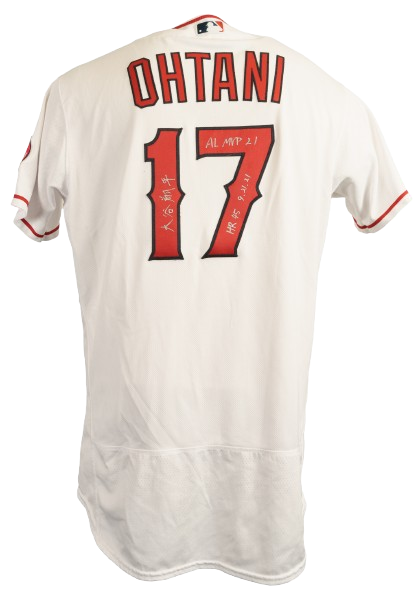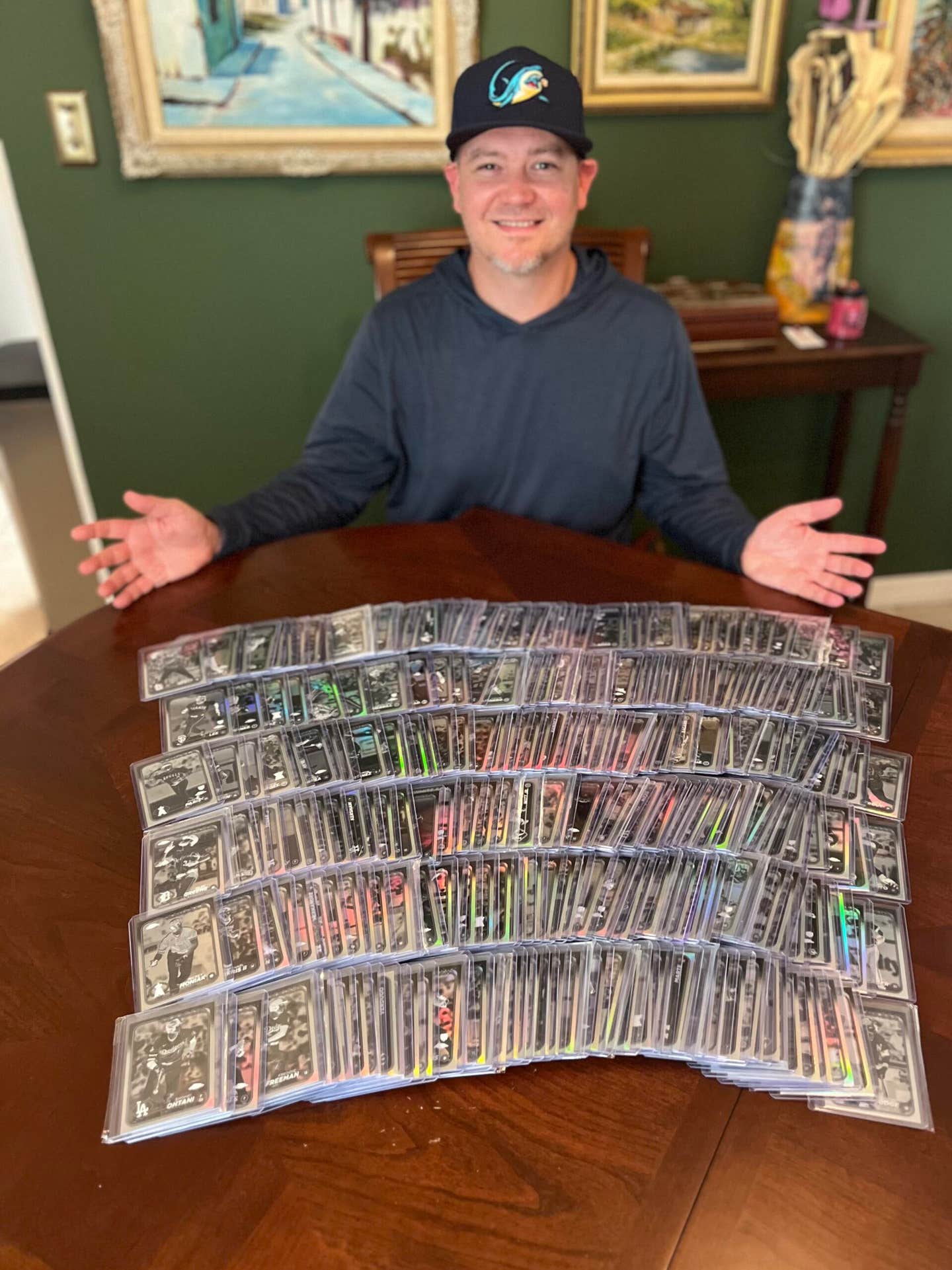If you collect game-worn/used uniforms, how often have you purchased a jersey described as showing “great” or “fantastic” use, only to find that the degree of wear is minimal if any at all?
Unlike with the trading card industry, there is no standardized or numerical grading system for evaluating the level of use exhibited on a game-used uniform or equipment piece. From my viewpoint, I’m not so sure a system akin to what card buyers and sellers use would be viable in the game-used marketplace. The wear or use can vary from sport to sport and from one type of equipment or uniform item to another. These differences would make a universal grading method difficult to adhere to on a consistent basis.
We must remember that what would be considered good or great wear on a baseball or basketball jersey may not be so highly rated on a football or hockey uniform. Football and hockey are high-impact sports where the uniforms and equipment can take a considerable beating. Baseball and basketball players are not often subjected to collisions and controlled violence, so their uniforms will rarely appear as though they went through a train wreck.
When trying to sell or trade a uniform, it is helpful if the seller describes the level of game wear in a qualitative and quantitative fashion. It doesn’t matter whether the seller is a dealer or a collector; we should all strive to do this in an honest and verifiable manner. It is perfectly acceptable to use adjectives such as “good” or “great” or even “hammered,” but please qualify the descriptive terms you use. Describe what the wear consists of, whether it is repairs, pilling, staining, burns, impact marks, frayed numbering and lettering or a combination of all of them. It doesn’t hurt to indicate where the wear exists and if possible, describe the quantities of the particular battle scars. When a trader is required to point out the tangible aspects of the game wear, he will be offering an honest description not an exaggeration that can mislead a potential buyer.
For describing the following Washington Redskins jersey, I used simple nomenclature that qualifies my basic descriptive terms with quantitative points:
White No. 50 JONES, NOB-nameplate change, Adidas size 46, 01 year tag. Excellent wear is exhibited with four repairs plus numerous impact and paint marks on the shoulders and numbers.
I describe this jersey as showing “excellent” wear. I validate that descriptive term by pointing out that there are four repairs on the jersey in addition to numerous impact and paint marks. Certainly, the term excellent can be a matter of opinion, but the repairs in addition to impact and paint marks are the cold hard facts that won’t mislead anyone.
When describing the level of wear or use on a baseball jersey, let’s use this Tom Glavine N.Y. Mets jersey as an example:
Black/alternate No. 47 GLAVINE, NOB, Majestic size 44 buttondown, +2” body, +1’ sleeve, set 3 2004 tagging all inside the tail. SHEA STADIUM 40th ANNIVERSARY patch, “BOB MURPHY” and “Ya Gotta Believe TUG” tributes on the sleeves. Autographed on the back No. 4. Missing button at mid-chest. Good baseball use with chest and sleeve pilling, plus light number fraying.
In this instance, I don’t have a quantity of repairs or other scars to rely on; however there is evidence to support the claim of “good baseball use.” The spots of chest and sleeve pilling are indeed present and can be seen without much effort. The numbers on the jersey do show light fraying, most likely as a result of team laundering. Again, there are no exaggerated claims in an effort to make a sale. It’s just the facts and that’s the way it should be. And that illustrates the difference between the major sports where levels of game use are concerned. What I refer to as “good baseball use” would be considered “light” on a football or hockey jersey.
Hockey collectors are sticklers for jerseys that show high levels of wear. A desirable hockey sweater will show stick marks, board burns, rips, repairs and pilling that pilling being on the inside and outside. A hockey jersey described as showing “great” wear will only serve to elicit requests from interested collectors for a more in-depth explanation of that wear. It will be required that you expound on the types of wear in a qualitative and quantitative manner. Here is an example:
Black/3rd jersey No. 11 KASPARAITIS, NOB, Starter size 52 airknit, 1997-98 season. Overall good wear is exhibited with considerable pilling on the inside and outside collar, several small unrepaired rips and a modest number of stick marks and burns about the body.
The “overall good wear” used to describe the Darius Kasparaitis jersey would likely be considered “great” or “excellent” by some collectors. However, I am keenly aware of and appreciate the strict standard that experienced hockey collectors adhere to when relating game-wear. If a hockey jersey is billed as showing great or excellent use, that sweater had better look like it was worn in a back-alley rumble by a member of the losing side. That is especially true if it’s a vintage piece worn in the era when players weren’t wearing multitudes of jerseys every season.
If a uniform or equipment piece shows no signs of use, please don’t be afraid to describe it as such. Your honesty will be greatly appreciated by your fellow collectors. If a uniform is game-issued and not worn, then it is what it is and there is nothing that an honest person can do to change it.
So, what the heck are these types of wear I mention? What is pilling? What kind of misguided fool would “burn” a jersey? What follows is a primer that will hopefully provide some answers:
- Burns: Small sections of melted material. On hockey jerseys burns are the result of high-impact contact with the boards surrounding the ice. Those on football jerseys are the result of forceful contact with artificial turf.
- Impact Marks: Generally no longer than several inches and are the result of high-impact collisions with helmets or other jerseys. Most common on football uniforms.
- Fraying: Separation and flattening of fibers that make up the thread used to stitch numbers, letters, and any material connection points. This is the result of laundering, friction, repetitive motion, and/or light impact.
- Paint Marks: Paint from the advertisements on hockey arena boards plus logos and insignias painted on football fields.
- Pilling: Tiny bits of rolled or ball shaped material that, like fraying, is the result of light impact, repetitive motion and friction. It is most commonly found on spandex panels, under sleeves, and inside of cowls and tails. It is also common on the satin shoulder material found on many football jerseys.
- Pulls: Small pieces of material pulled or looped from the main body. This is very similar to pilling and is also referred to as “snags.”
- Repair: Sown together rip or tear-in essence a rip or tear that has been fixed.
- Snag: Most common on hockey jerseys. A small section of separated material that is not completely ripped or torn but appears to be scratched or gashed.
- Stick and Puck Marks: The result of those sticks and pucks making hard contact with hockey jerseys. If you see these marks on jerseys from other sports, you’ve got trouble.
- Team Laundry Wear or Wash Wear: Light, fine fraying in addition to tag wrinkling and tackle. This is commonly the only type of wear found on jerseys worn by baseball players, football kickers and punters, back-up quarterbacks and benchwarmers in all sports. Jerseys worn a minimal amount of times in any sport may only show this type of wear.
It is helpful to be able to recognize the types of wear on a uniform and then describe it accurately. As where repairs, rips, stains, stick and puck marks are easily distinguished, pilling and laundry wear can be more subtle. The important thing is to describe the wear honestly to a potential buyer or trading partner. It is better to hear “Wow, this jersey is even better than you described” than “Where is this fantastic use you mentioned?”








